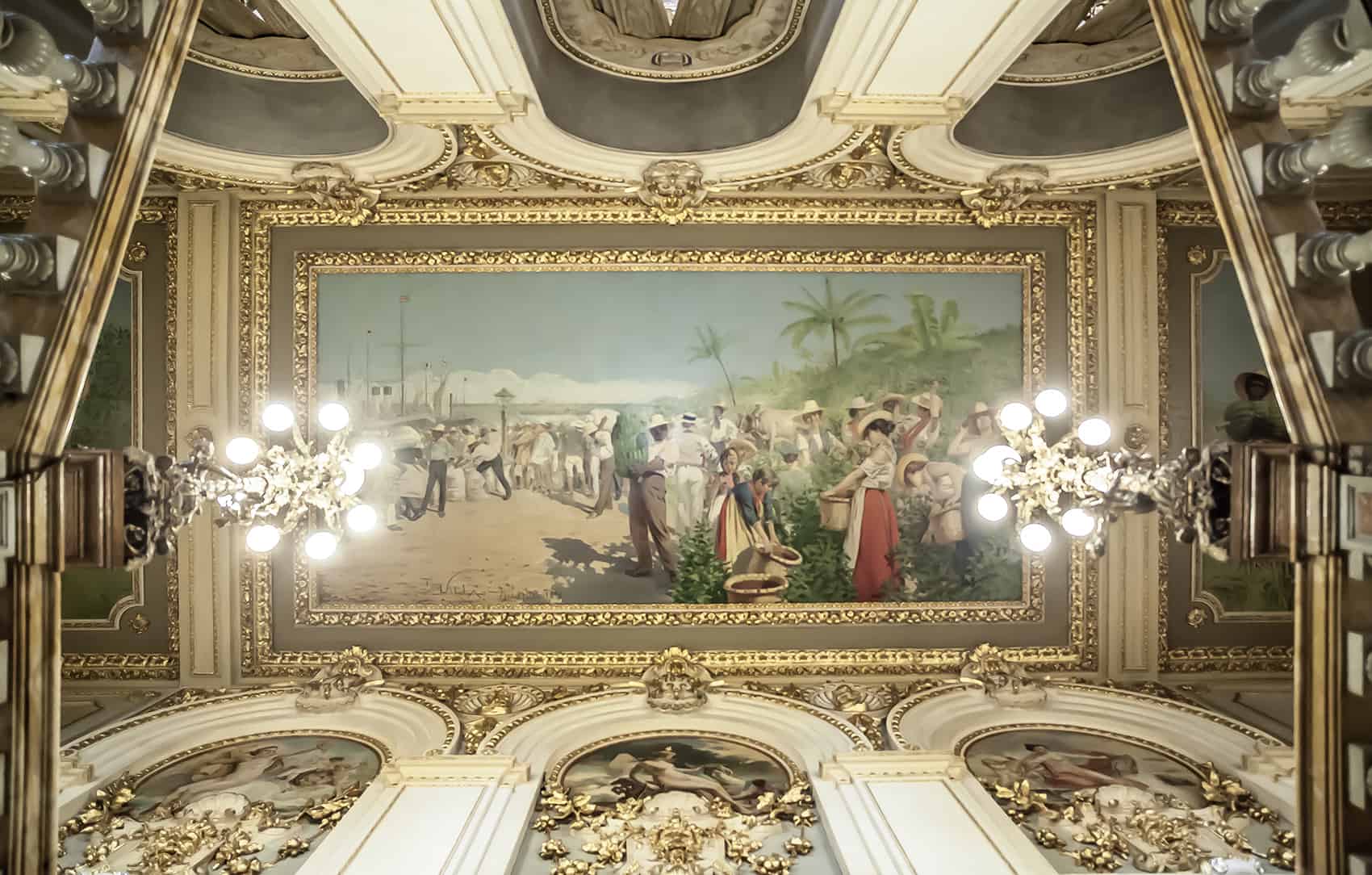“If you build it, they will come,” intoned Kevin Costner in the 1989 movie, “Field of Dreams. ”Turn the clock back almost a century. San José’s National Theater had its roots inexactly the same sentiments. It stemmed from one Adelina Patti, an Italian-English opera diva regarded as the most renowned female vocalist of late 19th century. She turned down an invitation to perform in Costa Rica during an 1889world tour, citing lack of a suitable performance venue to showcase her talents.
It wasn’t entirely true that San José had no theaters at that time, says Alfonso Solano of the National Theater’s cultural promotion department. Several make shift performance halls existed around town during the mid-1800s, the nicest of which– though nowhere near as elaborate as today’s structure – was the Municipal Theater.
Earthquake damage necessitated its demolition in 1888. Coffee barons made the decision to construct a national arts house, the likes of which Latin America had never before seen. Ground broke in 1890. Architects modeled plans on the Théatre Comique in Paris, with sandstone exterior and Italianate arched windows and marble columns. Construction was financed partly by the state and supplemented by a 20-céntimotax on each 100 pounds of coffee exported.
A total of ¢2 million (just over $900,000 at late-1800s exchange rates)was raised. “The exact amount was always a secret,” explains architect William Monge, adding the government was reluctant to divulge how much it spent on a project for a city of scarcely 20,000 people at the time. Monge is doing a retrospective study to estimate the cost in 1890s terms. The inventory today of building and furnishings is valued at $10 million. After seven years of anticipation, President Rafael Yglesias (1894-1902)dedicated the theater on Oct. 21, 1897.
Opening night saw a production by the French Opera Company of composer Charles Gounod’s “Faust.” The arts in Costa Rica had finally come into their own. “What a boon for Costa Rica,” Solano says. “A country with no real roads or highways finally had such a theater. ” The building was also fully equipped for electricity – a rarity in the world at that time – and was served by the capital’s small electric plant that stood where the Social Security (Caja) building stands today.“
Antiquated electricity,” Monge says, “but electricity none the less.” The theater was the scene of balls and dances during the first half of the 20th century, according to Solano. An annual president’s ball took place each Sept. 15 to celebrate Independence Day, and the aristocracy frequently rented out the building for debutante parties.
That practice ended in the 1940s, but the theater is still the site of formal government receptions on special occasions. The most famous of the theater’s elaborate frescoes is Italian painter Aleardo Villa’s ceiling mural, Alegoría del Café y Banano (Allegory of Coffee and Bananas), depicting a harvest of the country’s two signature crops.
The same scene also illustrates Costa Rica’s old ¢5 note, and you might find a vendor outside on the Plaza de la Cultura selling the bill as a souvenir. THE National Theater building itself is open Mon.-Sat., 9 a.m.-4 p.m. To get beyond the lobby and the gift shop during the day, admission is $3 and includes a guided tour in English, Spanish or French.
A couple of the guides are presently studying LESCO, Costa Rican sign language, and plan to be equipped to sign tours by the end of the year. Or stop in for a bite at the Café del Teatro Nacional, to the left of the lobby as you walk in. Sandwiches, cakes and coffee make up the fare – it’s a pretty standard light, upscale-café menu – but no restaurant in Costa Rica is quite so baroque in its décor. Frescoes on the ceiling depict semi nude figures celebrating the theater’s grand opening in 1897.
The café keeps the same hours as the theater itself, but is open until curtain time on performance nights, and again at intermission. Or, now that the cultural season is in full swing again – the theater is dark during school vacations from mid-December through late January – attend a performance. Tickets start at $4 and rarely exceed $50. Where else can you see shows of world-class symphony, dance and opera for such prices?
And if you’re willing to sit in the cheaper, less comfortable, obstructed-view seats in the upper balcony – derisively called the gallinero (chicken coop)in the early days – you can really do a performance on the cheap. (As was common practice in theaters built at that time, these upper-level seats have their own separate entrance off on the building’s north side.)
The ticket office in the theater lobby(221-1329) sells tickets and can let you know about upcoming performances.






